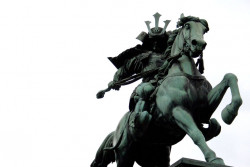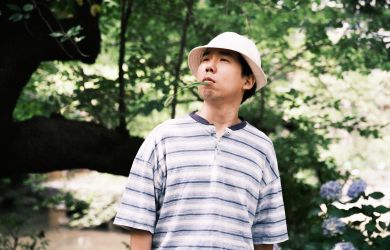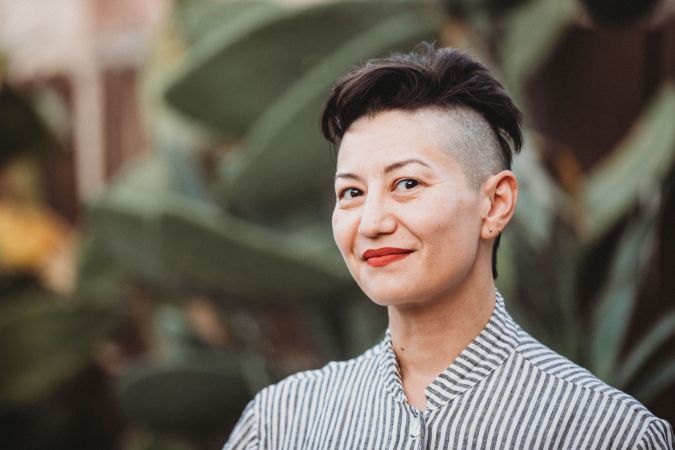
September 23, 2020
3 Female Artists You Should Follow
Blossom the Project, Mari Naomi and Christine Mari Inzer on art, activism and mental health
By Winnie Tan
Whether it’s listening to a song or looking at a painting, the art we appreciate makes us think. Art connects us and has a mysterious way of reaching our core. You’ve probably felt it before, when your soul stirs at something a complete stranger created, or when a picture says all that you cannot put into words.
It’s undeniable — meaningful art makes a difference, and here are three artists who show us exactly how.
Meg Hoffmann (@blossomtheproject)
https://www.instagram.com/p/CEEVgoCjHHn/?utm_source=ig_web_copy_link
For Meg Hoffmann, the cherry blossoms are a symbol of new beginnings. This past spring, as the flowers bloomed, Meg was inspired by the idea of letting one’s heart and mind blossom too, and that was how Blossom the Project came to be.
Fusing art with education, Meg now uses her bilingual platform to spread awareness on Black Lives Matter, mental health, feminism and other important social issues. With over 30,000 followers on Instagram, Blossom the Project is a force to be reckoned with and a vital source of information for the Japanese and English-speaking community.
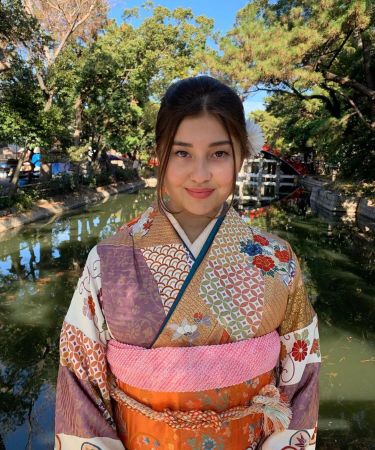
What inspired you to start Blossom the Project?
Meg Hoffmann: I’ve always been passionate about mental health, stemming from my own struggles with depression that I’ve had since high school. I was raised in a few countries, but attending high school in Japan was when I noticed the lack of resources in the country for people who are struggling. Help was difficult to obtain, and the general stigma that society has towards the concept of mental health didn’t make things easier. Joining an on-campus mental health support group when I entered college in America made me even more conscious of how much more needed to be done in Japan.
In April, when the pandemic escalated, I wanted to create a platform to talk about different issues. I started Blossom the Project focusing on mental health, but as I progressed, I realized that the state of our mental health is very closely related to issues like socio-economic problems and racism that we see in society today. To truly address the root of the problem, we must recognize all the factors that surround it, and that’s why I create posts on topics other than mental health, too.
I realized that the state of our mental health is very closely related to issues like socio-economic problems and racism that we see in society today
How has public reception been?
MH: Overall, I’ve had a very positive response. The account grew very quickly, so that shows a lot of people are looking for it, and the majority of my followers are very supportive. I do face challenges with some saying that I’m trying to enforce Western ideas on Japan, but that cannot be further from the truth.
For example, one of my most popular posts is about why Japan needs feminism, but it also received the most backlash. In reality, the things I’m advocating for are not at all political, but basic human rights. Regardless of where you live, everyone has a right to things like gender and racial equality.
What do you hope for Blossom the Project to achieve in the future?
MH: My main goal is to bring awareness to all the personal and societal issues we face, and to help people incorporate these topics into daily conversations with family friends.
In Japan, there can sometimes be this collective idea that someone will take care of the problem and therefore it’s not a matter of personal responsibility so we ought to keep quiet. I believe that what we say and choose to share on social media today holds so much power, and that if we can consider what our roles are in society, we can use that power for greater good by choosing to be informed and involved. With more conversations, more people can then take action, and that’s what I hope to help bring about.
Aside from working on Blossom, I have some side projects that focus on mental health in the works!
@blossomtheproject
www.blossomtheproject.com
Christine Mari Inzer (@christinemaricomics)
https://www.instagram.com/p/B9-75bwFVYj/
Christine Mari Inzer has stories to tell. Half-Japanese and American, her comics document snippets of her life in Tokyo, her inner struggles with identity and coping with mental health issues. Her minimalist black-and-white illustrations may appear simple, but reading between the lines is how you’ll get the most of this rising artist’s work.
How did you start drawing comics?
Christine Mari Inzer: I always loved drawing as a kid, and it was the one thing that I found myself being able to do for hours and hours. When I started posting my comics on Instagram two years ago, I had just moved to Japan. I wanted to experience living in Tokyo on my own, but I eventually grew disillusioned with my previous vision of Tokyo. I felt like my identity as ‘hafu’ was being questioned, and that people would tell me what I was or wasn’t. Drawing has always provided me with comfort and helped me understand my own feelings, so the comics are my way of trying to figure out who I am by myself.
I wanted [my comics] to be an honest representation of my life, just saying ‘This is me, and this is how I feel’
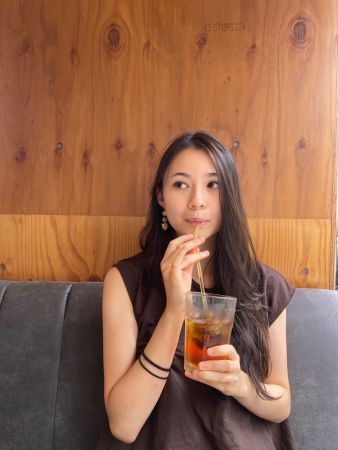
Was it a conscious choice to share that part of your story with the public?
CMI: When I first started drawing the comics I only intended to share with close family and friends, and most of all I was drawing for myself so I was simply being as honest as possible about how I was feeling.
When my art started gaining traction I would receive comments from people saying that I expressed what many people think but don’t express, and that through me they were able to see themselves.
I think for a lot of people, their profiles on social media are a projection of their lives, and how they want to be perceived by others. With my comics, I wanted them to be an honest representation of my life, just saying “This is me, and this is how I feel.”
What are your plans for the future?
CMI: I launched a Kickstarter for my book “Kokoro” this summer and I’ve been busy working to get the book ready to be shipped at the end of the year! The amount of support I’ve received has been overwhelming and I’m very excited for when it comes out. Other than that, I’m always drawing and posting comics on my Instagram account so readers can always look there to see what I’ve been doing.
@christinemaricomics
christinemari.com
“Kokoro: A Graphic Memoir”
Mari Naomi (@marinaomiart)
https://www.instagram.com/p/BfeoEMBAezP/?utm_source=ig_embed
Bold, unapologetic, real. Those are just some of the words that come to mind when looking at award-winning author and illustrator Mari Naomi’s work. The L.A.-based artist also runs databases listing thousands of artists from marginalized communities, proving that art can not only empathize and empower, but also spotlight the voices of underrepresented people.

When did you begin drawing your comics, and how did you come to share your work online?
Mari Naomi: I started making comics in 1997, at the ripe age of 23. I’d been writing and drawing a lot up ’til then but I hadn’t considered combining the two art forms until I came across underground comics. One story in particular, Mary Fleener’s “The Jelly” lit a fire under me and I thought, “I can do that!” So I did.
The internet existed back then. I recall being in an email group and some early internet forums at the time my first published comic came out, in 1998, but it wasn’t as ubiquitous as it is now. I put bits and pieces of my work online, but I didn’t have a webcomic until I started a few in order to promote my first graphic memoir, “KISS & TELL, A ROMANTIC RESUME.” I wanted to do anything I could to help that book get into the world, so I struck up a total of three simultaneous webcomics, plus other freelance and anthology pieces. It was a full-time job!
Cartooning is a solitary endeavor, so finding your community can be valuable
What was the catalyst in your founding of the databases for underrepresented artists? And what are some things about it that you are most proud of?
MN: I started the Cartoonists of Color as a personal project when I was working on an article about writing people of color. After I’d gathered about a hundred names, I realized this information would be a valuable thing to share with the public. After I got the Cartoonists of Color started, I saw the need to boost other marginalized voices, so then I created the Queer Cartoonists database, and more recently, the Disabled Cartoonists database. Right now, there are almost two thousand marginalized creators listed in the databases.
I’m quite proud of how many jobs people have gotten from the databases, and how they’ve connected folks. Cartooning is a solitary endeavor, so finding your community can be valuable.
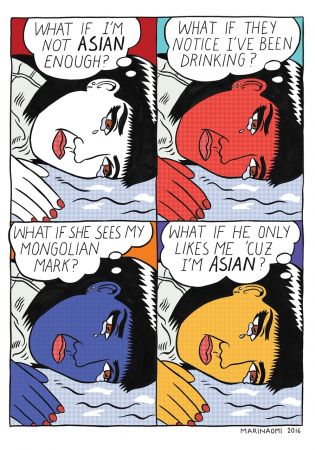
What projects are you working on right now and what can readers expect to look out for in the future?
MN: I just published a book! It’s the final graphic novel in my “Life on Earth” trilogy, which tells a story of teenage friendship, love and a possible alien abduction through different points of view. What’s special about this is, each point of view is illustrated in a different style, dependent on the perspective of the protagonist, and as their perspectives change, so do the illustration styles.






